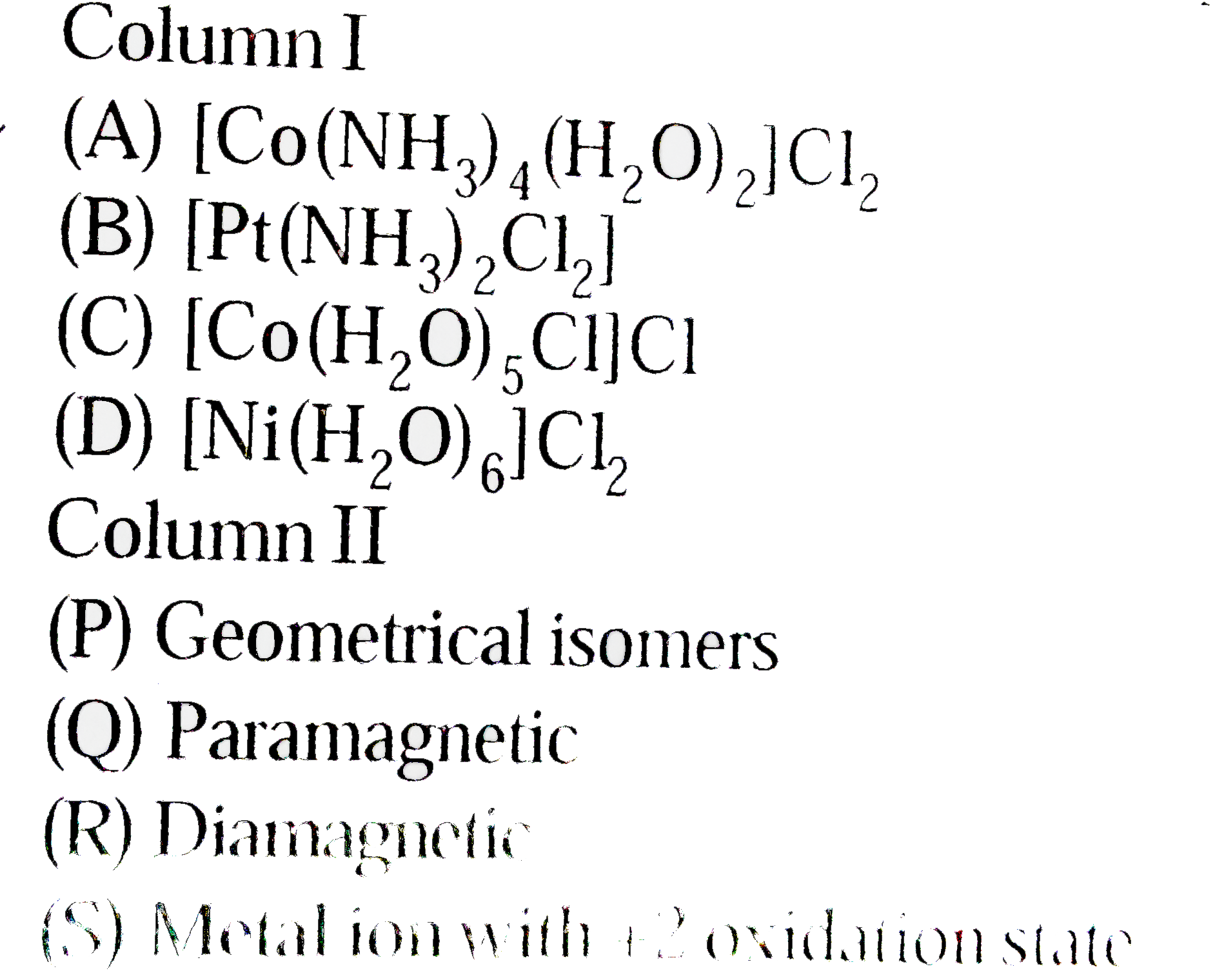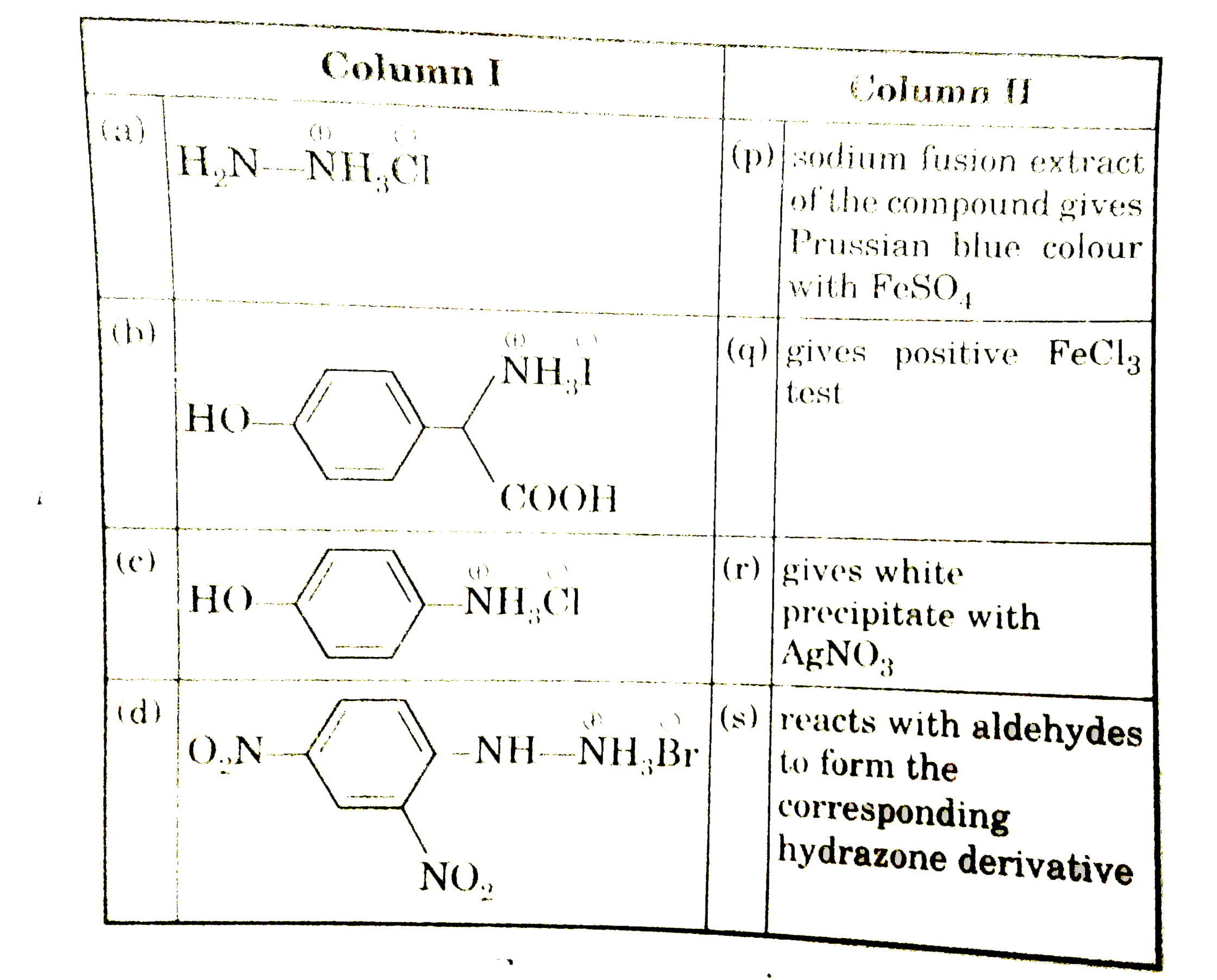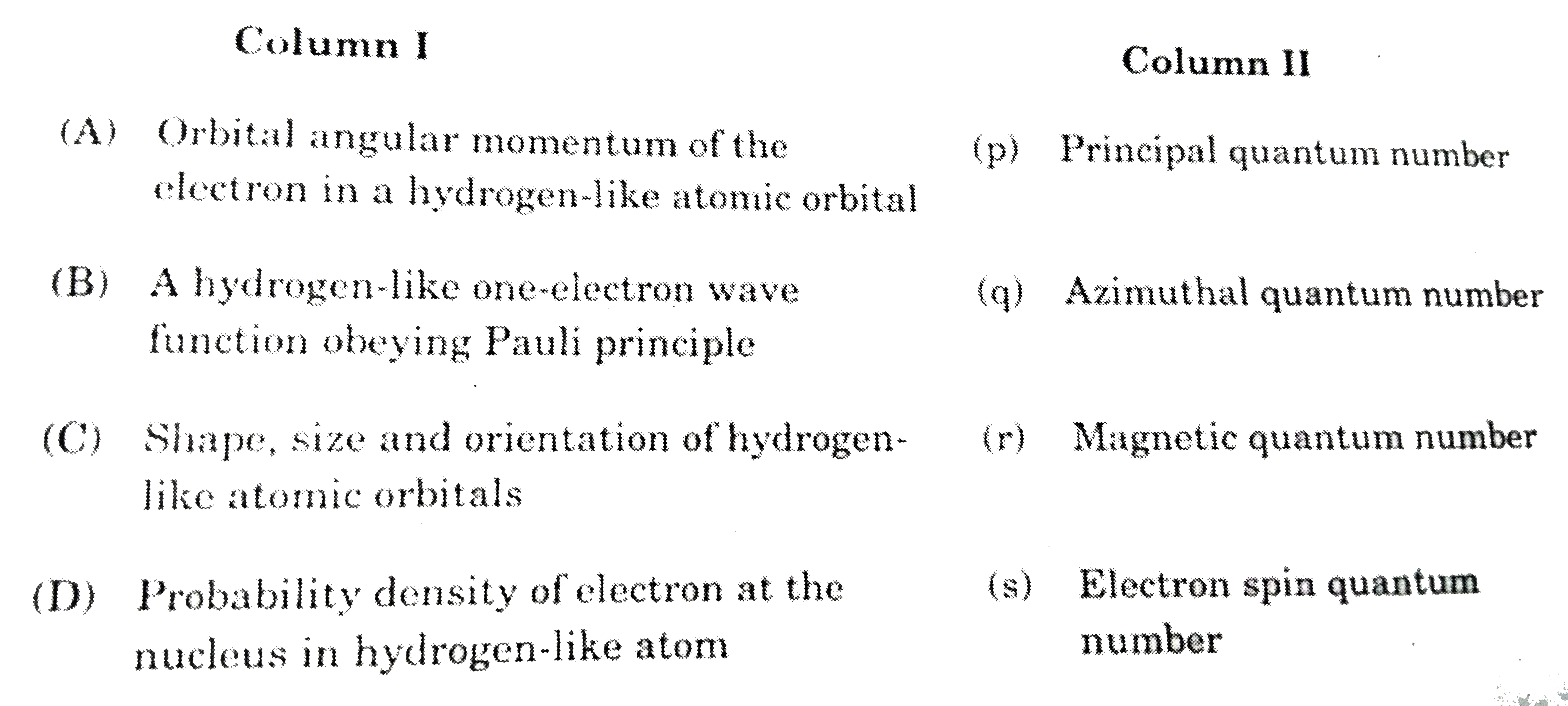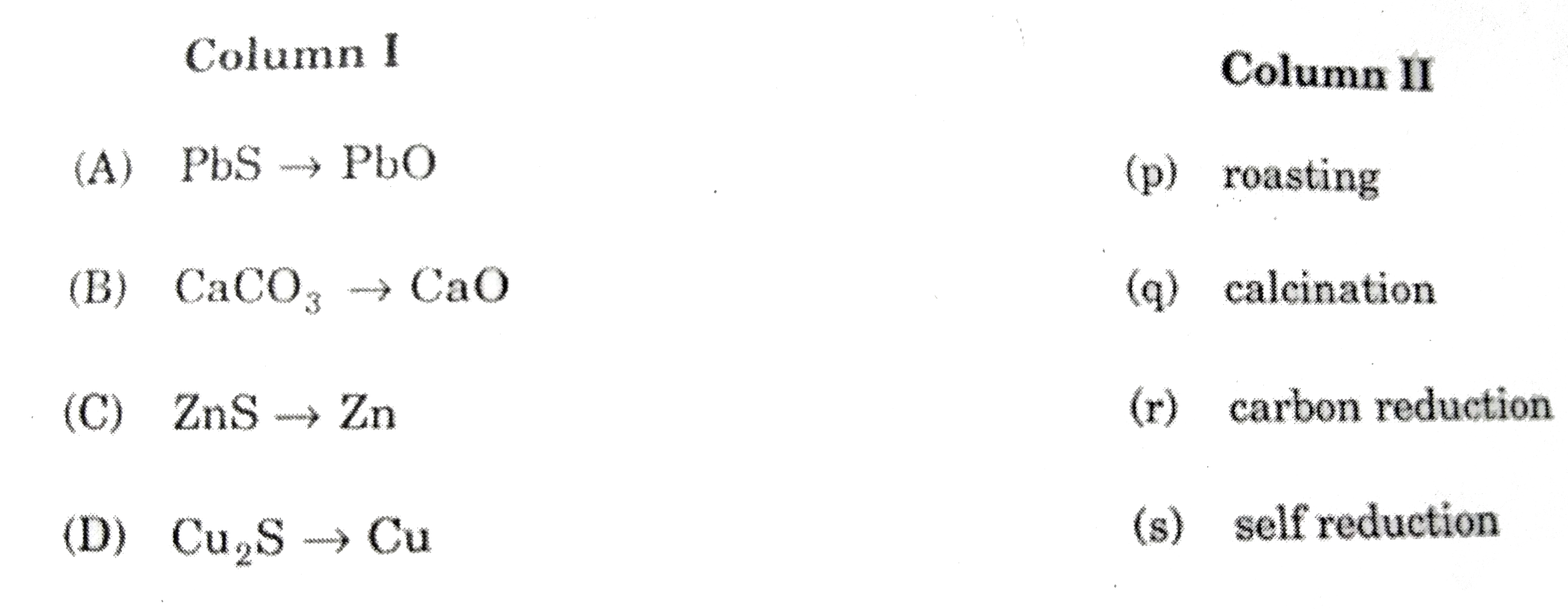Match the crystal system / unit cells mentioned in Column I with their characteristic features mentioned in Column II. Indicate your answer by darkening the appropriate bubbies of the 4×4 matrix given in the ORS.
Column IColumn II(A)Simple cubic and face - centred cubic(p)have these cell parameters a = b = c and α=β=γ(B)cubic and rhombohedral(q)are two crystal systems(C)cubic and tetragonal(r)have only two crystallography angles of 90∘(D)hecagonal monoclinic(s)belong to same crystal system
To solve the problem of matching the crystal systems with their characteristic features, we will analyze each option in Column I and match it with the appropriate feature in Column II.
1. Identify the features of Simple Cubic and Face-Centered Cubic (FCC):
- Both Simple Cubic and FCC have the same cell parameters: a=b=c and α=β=γ=90∘.
- They belong to the cubic crystal system.
Match: A → p
2. Analyze the features of Cubic and Rhombohedral:
- Cubic has a=b=c and α=β=γ=90∘.
- Rhombohedral has a=b=c but α=β=γ≠90∘.
- They are two different crystal systems.
Match: B → q
3. Examine Cubic and Tetragonal:
- Cubic has a=b=c and α=β=γ=90∘.
- Tetragonal has a=b≠c and α=β=γ=90∘.
- These belong to different crystal systems but both have two angles of 90∘.
Match: C → r
4. Evaluate Hexagonal and Monoclinic:
- Hexagonal has a=b≠c and two angles of 90∘ (the third angle is 120∘).
- Monoclinic has a≠b≠c and two angles of 90∘ (the third angle is not 90∘).
- They are two different crystal systems.
Match: D → s
Final Matches:
- A → p
- B → q
- C → r
- D → s
- Both Simple Cubic and FCC have the same cell parameters: a=b=c and α=β=γ=90∘.
- They belong to the cubic crystal system.
- Cubic has a=b=c and α=β=γ=90∘.
- Rhombohedral has a=b=c but α=β=γ≠90∘.
- They are two different crystal systems.
- Cubic has a=b=c and α=β=γ=90∘.
- Tetragonal has a=b≠c and α=β=γ=90∘.
- These belong to different crystal systems but both have two angles of 90∘.
- Hexagonal has a=b≠c and two angles of 90∘ (the third angle is 120∘).
- Monoclinic has a≠b≠c and two angles of 90∘ (the third angle is not 90∘).
- They are two different crystal systems.
- A → p
- B → q
- C → r
- D → s
Topper's Solved these Questions
- SOLID STATEBOOK - FIITJEECHAPTER - SOLID STATEEXERCISE - EXERCISE
5 Videos
- SOLID STATEBOOK - FIITJEECHAPTER - SOLID STATEEXERCISE - MATCHING TYPE SINGLE CORRECT QUESTION
3 Videos
- SOLID STATEBOOK - FIITJEECHAPTER - SOLID STATEEXERCISE - SOLVED PROBLEMS (OBJECTIVE) COMPREHENSION
4 Videos
- QUALITATIVE ANALYSIS BOOK - FIITJEECHAPTER - QUALITATIVE ANALYSIS EXERCISE - Single interger answer type
3 Videos
- STOICHIOMETRY AND BALANCING REDOX REACTION BOOK - FIITJEECHAPTER - STOICHIOMETRY AND BALANCING REDOX REACTION EXERCISE - SINGLE INTEGER ANSWER TYPE QUESTIONS
5 Videos
Similar Questions
Match the crystal systems/unit cells mentioned in colunn I with their characteristic features mentioned in column II. Indicate your answer by darkening the appropriate bubbles of the 4×4 matrix given in the ORS.
Column I Column II (A) simple cubic and face-centred cubic(p) have these cell parameters a=b=c andα=β=γ(B) Cubic and rhombohedral (q) are two crystal systems(C) Cubic and tetragonal(r) have only two crytallographic angles of 90∘(D) Hexagonal and monoclinic (s) belong to the same crystal system
View SolutionMatch the compounds/ions in Column I with their properties/reactions in Column It. Indicate your answer by darkening the appropriate bubbles of the 4×4 matrix given in the ORS.

View Solution
Knowledge Check
Match the following
List - IList - II(P)Simple cubic and face - centred cubic(1)Have these cell parameters a = b = c and α=β=γ(Q)Cubic and rhombohedral(2)Are two crystal systems(R)Cubic and tetragonal(3)Have only two crystallography angles of 90∘(S)Hexagonal and monoclinic(4)Belong to same crystal systemAP-1,3, Q-1,2, R-2,4, S-1,3BP-1,2, Q-1,4, R-2,4, S-3,4CP-4,1, Q-1,2, R-2,3, S-1,2DP-1,4, Q-1,2, R-2, S-2,4
Match the compounds in Column I with their characteristic test(s)/reaction(s) given in column II. Indicate your answer by darkening the appopriate bubbles of the 4×4 matrix given in the ORS.

View SolutionMatch the complexes in column I with their properties listed in column II. Indicate your answer by darkening the appropriate bubbles of the 4×4 matrix given in the ORS.

View SolutionMatch the compounds in Column-Iwith their characterstic test(s)/reaction(s) given in Column-II. Indicate your answerby darkening the appropriate bubbles of the 4 x 4 matrix given in the ORS.

View SolutionMatch the entries in Column I with the correctly related quantum number(s) in Column II. Indicate your answer by darkening the appropriates bubbles of the 4×4 matrix given in the ORS

View SolutionMatch the complexes in Column with their properties listed in Column-11. Indicate your answer by darkening the appropriate bubbles of the 4×4 matrix given in the ORS

View SolutionMatch the conversions in Column I with the type(s) of reaction(s) given in Column II. Indicate your answer by darkening the appropriate bubbles of the 4×4 matrix given in the ORS.

View SolutionMatch the imperfections in solids mentioned in column I with the characteristic features mentioned in column II .

View Solution
